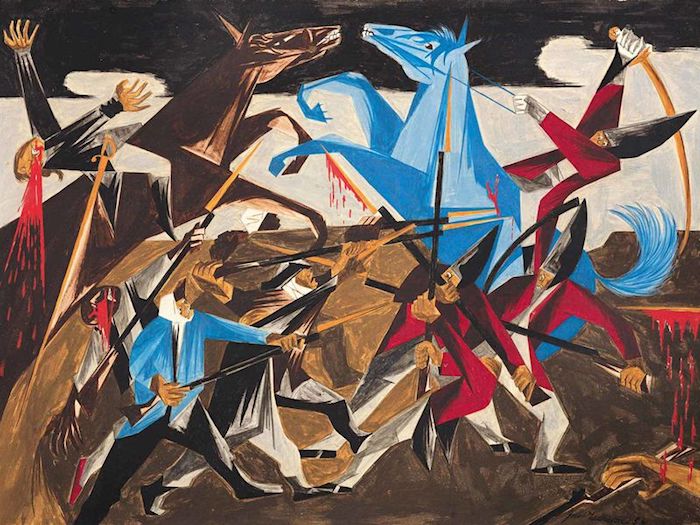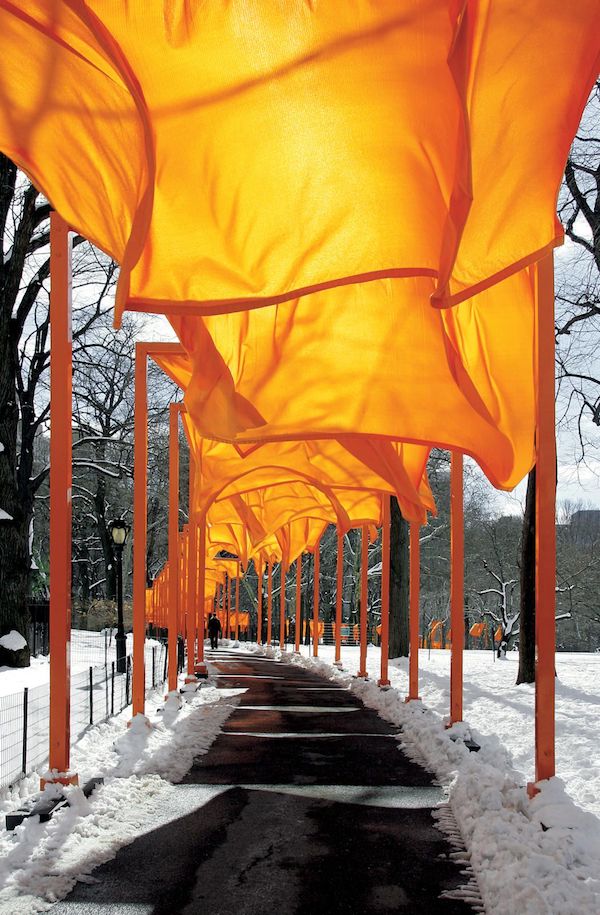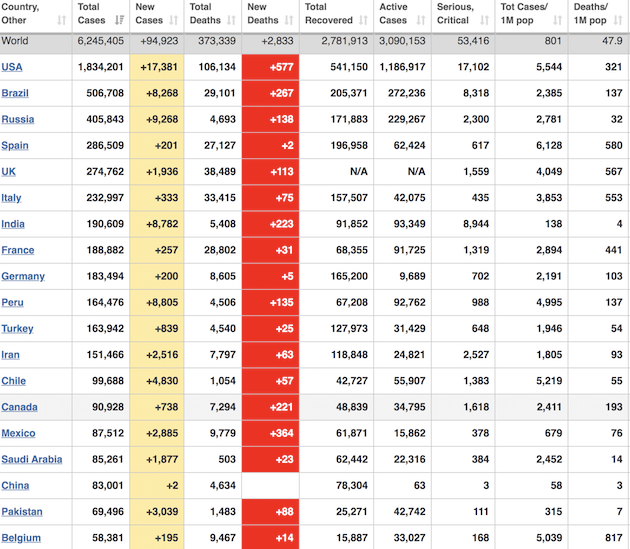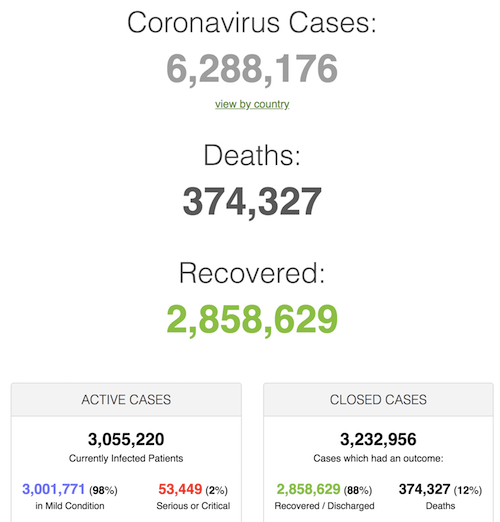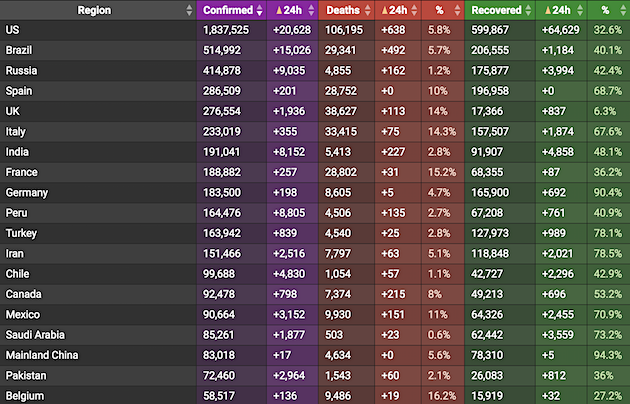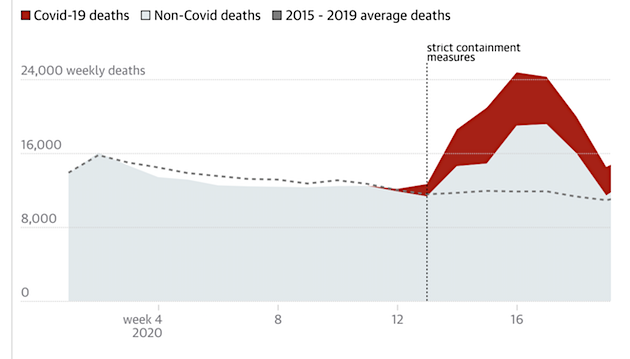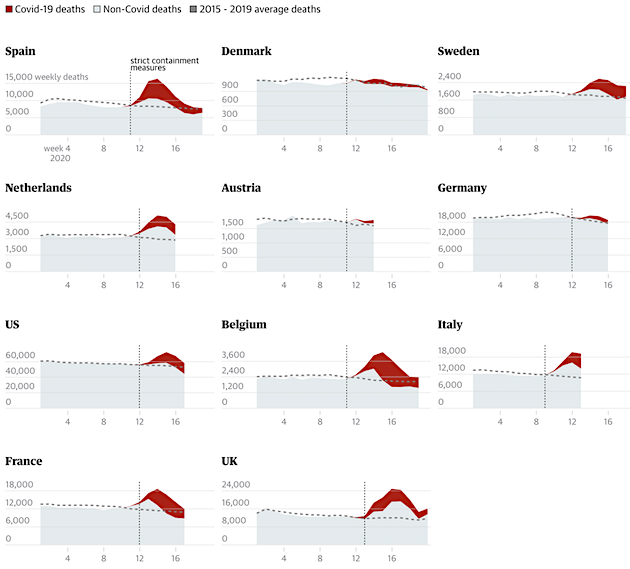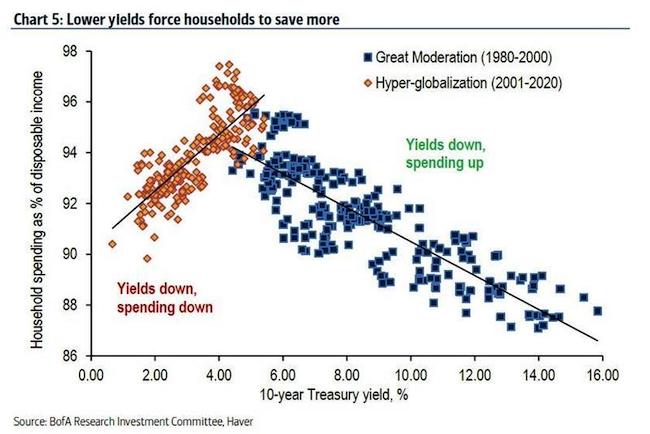
Max Ernst Inspired hill 1950
Hi, it’s me again, with more virus stories. I know you may think it’s enough now, but I do want to do this one. Actually, I haven’t written all that much about it, just two essays, 2019-nCoV and The Party and the Virus, but the topic has become a staple of my daily Debt Rattle news aggregators lately. So much that I find I need to remind myself all the time that it’s been a news item for only two weeks, going back to January 20 or so.
Through those two weeks, I’ve seen a number of studies, simulations, models, of where the virus can be expected to go going forward. And I want to take a look at some of them. I said early on that I didn’t like people talking about the economy as soon as the first people died, but 2 weeks later, given the growth of the epidemic, that doesn’t appear avoidable anymore.
People are starting to wonder what’s going to happen to society at large, and in “the markets” -or what’s left of them after central bank manipulation- if and when the virus remains an issue for an X amount of time. I think I can explain some of the parameters, though I want to make clear predicting what viruses do is, even for virologists, crystal ball material, and I ain’t got one of those.
China injected $242.74 billion into the markets via reverse repos on Monday and Tuesday, and stocks seem to have made up for their $445 billion losses on Monday. But what exactly is that optimism based on? Is it that “investors” think the PBOC will have their backs no matter what? Is it the reports of companies like Gilead testing possible solutions, vaccines?
I’m not an expert, but I do know it takes a sophisticated drug company about a year to develop a drug/vaccine for a novel disease, as “WuhanCorona” is. From what I can gather, the Gilead drug (co-)tested by the Chinese is basically an anti-viral developed with Ebola in mind, which may or may not work. Ebola is somewhere related to “WuhanCorona”, in a third cousin twice removed kind of way, but that’s it. HIV drugs could also perhaps work to some extent, but that’s a big question.
So what the optimism in the “markets” is based on, you tell me. Are people so afraid of what might be coming that their minds switch off, are they afraid to get informed, or do they genuinely think it’ll all soon be over? Me, I hope it’ll turn out fine, but I wouldn’t put any money on it. And that’s based on what I’ve been reading.
When reporting on the Wuhan situation started for real in the west, let’s say January 20 (that’s just 16 days ago!), there were 291 registered infection cases. There are 27,648 now, and 564 people have died. Those are “official” Chinese numbers, and there are plenty doubts about their accuracy (see today’s stories about Tencent posting 10x higher numbers), but let’s roll with the official ones for the moment. I’m going to hop through time a little, but please bear with me, there is a logic.
First, there’s this from January 28 in the SCMP (South China Morning Post), a major Hong Kong news outlet owned by -very Chinese- Alibaba. Zhong Nanshan is a scientist working for the government. My first reaction when I saw this was: it looks like he’s doing damage control for the CCP.
Chinese Experts Say Wuhan Coronavirus Outbreak Will Not Last
One of China’s top experts said the Wuhan coronavirus infection rate could peak in early February. “I estimate that it will reach its peak in around the next week or 10 days, after that there will be no more major increases,” said Zhong Nanshan, the respiratory disease scientist who played the pivotal role in China’s fight against the severe acute respiratory syndrome (Sars) coronavirus epidemic in 2002-03.
[..] Gao Fu, the director of the Chinese Centre for Disease Control and Prevention [said] he was “optimistic” that the outbreak’s “turning point” could arrive by February 8 if current disease control protocol is maintained.
3 days earlier, January 25 (that’s just 11 days ago!), the SCMP ran this piece on the same Zhong Nanshan, which reinforces my image of him a bit more. One might argue that Beijing has become more transparent recently, but the facts remain that for instance the WuhanCorona virus can be traced back to early December if not earlier, and that after the first death on December 9 no testing at all was done in Wuhan for a week.
Just to name a few things. So for a scientist to claim that “Beijing has no secrets to hide” and “has not held back information in reporting the outbreak in Wuhan” is at the very least over the top.
China Has Been Transparent About Wuhan Outbreak, Virus Expert Zhong Nanshan Says
Chinese officials have been transparent in handling the Wuhan coronavirus outbreak and the participation of a Hong Kong professor through the process indicates that Beijing has no secrets to hide, said one of the country’s leading experts on communicable diseases. Dr Zhong Nanshan, whose team is advising the leadership on how to handle the crisis, told a news conference in Guangzhou on Tuesday that China had not held back information in reporting the outbreak in Wuhan, which has sickened more than 300 people across the country since early December.
But also on January 25, there was this Zero Hedge piece about British scientist Jonathan Read, who had completely different ideas about the outbreak. Note: both predictions focus on Feb 4.
UK Researcher Predicts Over 250,000 Chinese Will Have Coronavirus In Ten Days
[..] in 10 days time, or by February 4, 2020, Read’s model predicts the number of infected people in Wuhan to be greater than 250 thousand (with an prediction interval, 164,602 to 351,396); [..] Read estimates that only 5.1% of infections in Wuhan are identified (as of Jan 24)..
[..] Read’s model alleges that Beijing was woefully late in its response and that recently imposed “travel restrictions from and to Wuhan city are unlikely to be effective in halting transmission across China; with a 99% effective reduction in travel, the size of the epidemic outside of Wuhan may only be reduced by 24.9% on 4 February.”
Very different. Remember his “travel restrictions from and to Wuhan city are unlikely to be effective in halting transmission across China”, it’ll come in handy later. Now, I’ve been posting a few math sequences, Fibonacci and otherwise, and those are way too negative, or at least would seem to be.
Problem with that is, as with many facets of the whole thing, we don’t know. There are simply too many scientists who state that real infection- and fatality numbers are much higher than what Beijing reports. They do that based on models, simulations etc. Not because they want The Party (CCP) to look bad, but because the models tell them.
An example: SCMP reported early Tuesday that the mortality rate for the city of Wuhan has reached 4.9%, while the mortality rate for Hubei province as a whole is 3.1%. They added that the mortality rate is predicted by doctors to drop, because extra medical attention is available etc. But we know that extra attention threatens to be overwhelmed by too many patients, shortages of beds, equipment, test kits, protective clothing etc. Nice try, but…
All this just to get to why I started writing this, which is a report published at The Lancet on January 31, from Hong Kong University (HKU). I have cited previously that it estimated 75�,815 people had been infected in Wuhan on January 25, a far cry from the 1,300 official number at that point. And yes, I do want to use the discrepancy to cast at least some doubt on the official numbers.
But there’s something else that I would like to focus on. The same report also says that the epidemic -or episode, pandemic- would end “around April” 2020, so between, say, mid-March and mid-May, 6 weeks and 14 weeks from now, if certain conditions are met. And that’s just Wuhan. Add another 2 weeks “across cities in mainland China”.
The full name of the paper by Prof Joseph T. Wu, PhD, Kathy Leung, PhD and Prof Gabriel M. Leung, MD is “Nowcasting and forecasting the potential domestic and international spread of the 2019-nCoV outbreak originating in Wuhan, China: a modelling study”
It says: “We estimated that if there was no reduction in transmissibility, the Wuhan epidemic would peak around April, 2020, and local epidemics across cities in mainland China would lag by 1–2 weeks.”
[..] In this modelling study, we first inferred the basic reproductive number of 2019-nCoV and the outbreak size in Wuhan from Dec 1, 2019, to Jan 25, 2020, on the basis of the number of cases exported from Wuhan to cities outside mainland China. We then estimated the number of cases that had been exported from Wuhan to other cities in mainland China. Finally, we forecasted the spread of 2019-nCoV within and outside mainland China, accounting for the Greater Wuhan region quarantine implemented since Jan 23–24, 2020, and other public health interventions.
Figure 2 summarises our estimates of the basic reproductive number R0 and the outbreak size of 2019-nCoV in Wuhan as of Jan 25, 2020. In our baseline scenario, we estimated that R0 was 2·68 (95% CrI 2·47–2·86) with an epidemic doubling time of 6·4 days (95% CrI 5·8–7·1;).
We estimated that 75� 815 individuals (95% CrI 37� 304- 130� 330) had been infected in Greater Wuhan as of Jan 25, 2020. We also estimated that Chongqing, Beijing, Shanghai, Guangzhou, and Shenzhen, had imported 461 (227–805), 113 (57–193), 98 (49–168), 111 (56–191), and 80 (40–139) infections from Wuhan, respectively.
Beijing, Shanghai, Guangzhou, and Shenzhen were the mainland Chinese cities that together accounted for 53% of all outbound international air travel from China and 69% of international air travel outside Asia, whereas Chongqing is a large metropolis that has a population of 32 million and very high ground traffic volumes with Wuhan. Substantial epidemic take-off in these cities would thus contribute to the spread of 2019-nCoV within and outside mainland China.
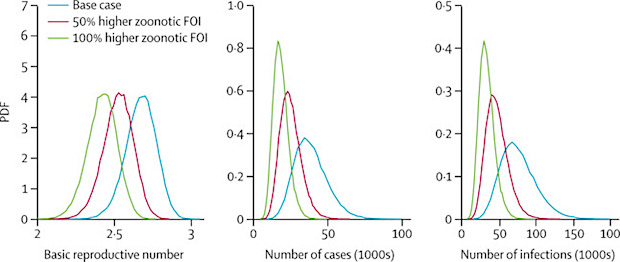
Figure 2 – Posterior distributions of estimated basic reproductive number and estimated outbreak size in greater Wuhan
NOTE: a zoonosis is an infectious disease that can spread between animals and humans. FOI = force of infection
Figure 4 shows the epidemic curves for Wuhan, Chongqing, Beijing, Shanghai, Guangzhou, and Shenzhen with a R0 of 2·68, assuming 0%, 25%, or 50% decrease in transmissibility across all cities, together with 0% or 50% reduction in inter-city mobility after Wuhan was quarantined on Jan 23, 2020.
The epidemics would fade out if transmissibility was reduced by more than 1–1/R0=63%. Our estimates suggested that a 50% reduction in inter-city mobility would have a negligible effect on epidemic dynamics.
We estimated that if there was no reduction in transmissibility, the Wuhan epidemic would peak around April, 2020, and local epidemics across cities in mainland China would lag by 1–2 weeks.
If transmissibility was reduced by 25% in all cities domestically, then both the growth rate and magnitude of local epidemics would be substantially reduced; the epidemic peak would be delayed by about 1 month and its magnitude reduced by about 50%.
A 50% reduction in transmissibility would push the viral reproductive number to about 1·3, in which case the epidemic would grow slowly without peaking during the first half of 2020.
However, our simulation suggested that wholesale quarantine of population movement in Greater Wuhan would have had a negligible effect on the forward trajectories of the epidemic because multiple major Chinese cities had already been seeded with more than dozens of infections each.
The probability that the chain of transmission initiated by an infected case would fade out without causing exponential epidemic growth decreases sharply as R0 increases (eg, <0·2 when R0>2).
As such, given the substantial volume of case importation from Wuhan, local epidemics are probably already growing exponentially in multiple major Chinese cities.
Given that Beijing, Shanghai, Guangzhou, and Shenzhen together accounted for more than 50% of all outbound international air travel in mainland China, other countries would likely be at risk of experiencing 2019-nCoV epidemics during the first half of 2020.
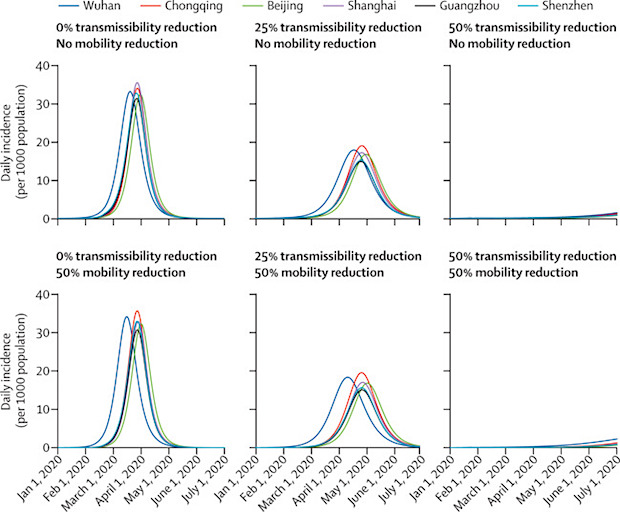
Figure 4 – Epidemic forecasts for Wuhan and five other Chinese cities under different scenarios of reduction in transmissibility and inter-city mobility
Ergo: reducing mobility is ineffective because too much mobility had already happened prior to the lockdowns. That ship has sailed. Not that one shouldn’t try to limit mobility, but it can’t stop the disease from spreading. The HKU team doesn’t say much about how they would see transmissibility lowered, but that seems to come down to more, and intense, lockdowns.
There’s a cruise ship floating off Yokohama where everyone is ordered to stay in their cabin because of the virus. Think along those lines: ordering people to stay in their homes. Sort of like the Black Death plague in 14th century Europe.
Perhaps there are anti-virals that can lower transmissibility somewhat, but that is by no means sure. The discovery ofasymptomatic transmitters doesn’t help either. You can’t very well test everyone, you test those with symptoms.
Chinese health authorities have identified a number of patients who have become carriers and transmitters of the coronavirus despite showing no outward symptoms of the disease. Li Xingwang, chief infectious diseases expert at Beijing Ditan Hospital, said most of the “dormant” carriers were related to and had caught the virus from patients with symptoms.
“These [carriers] have the virus and can transmit it. The amount of virus correlates to the severity of the illness, which means these patients carry less of the virus and their ability to transmit disease is weaker,” Li said.
Lunar New Year holidays have been extended everywhere across China, except in a few rare places. Major cities are under full lockdown. Western companies are scrambling to find alternative suppliers. Just 2 weeks into the epidemic. What happens when the factories stay closed for 6 or 16 more weeks?
Where will Chinese and western stocks be then? Xi Jinping has declared the WuhanCorona virus the number 1 threat. How can he order the factories to re-open before mid-April at the earliest then, when the peak of the epidemic hasn’t even been reached? But at the same time, can he afford to order all production shut for 2-3-4 months?
Thing about such peaks is, you can only see them in the rearview mirror. But you can bet that in 2-3 weeks max, people will solemnly declare the peak is here. Because the existing but especially potential economic damage will be so great. Bur declaring a peak too soon, let alone the end of the epidemic, is too much of a risk.
The way things are going, pretty soon there won’t be any westerners left in China, other than those who wish to stay permanently. Many if not most factories will be closed. No Chinese will be allowed to visit the rest of the world, while Chinese products will not ship there.
The big lockdown has just begun. Because once you start it, you can’t go back until you can prove that everything is safe. And that will in all likelihood take a long time, months. When will absolutely everybody have faith that everything is safe? When nobody falls ill anymore, when nobody can infect other people anymore.
But that’s a long way away. April, May, or later? And that in an economic system built on just-in-time delivery? Chinese oil demand is allegedly down 20% already. How can oil prices not fall if that is true? Since those prices are linked to the US dollar, what will happen with the currency?
There are too many questions that nobody can answer, or even try to. That’s complex systems for you. And I really really hope I’m wrong, but the way out of the lockdown is not clear at all.
The world cannot afford the risk of consciously helping to spread a lethal pandemic. And the only way to prevent it may be the big lockdown. Unless there’s a vaccine. But there isn’t one right now.
Overly alarmist, you say? Let’s hope so.

The Automatic Earth needs your support. Please donate what you can.

